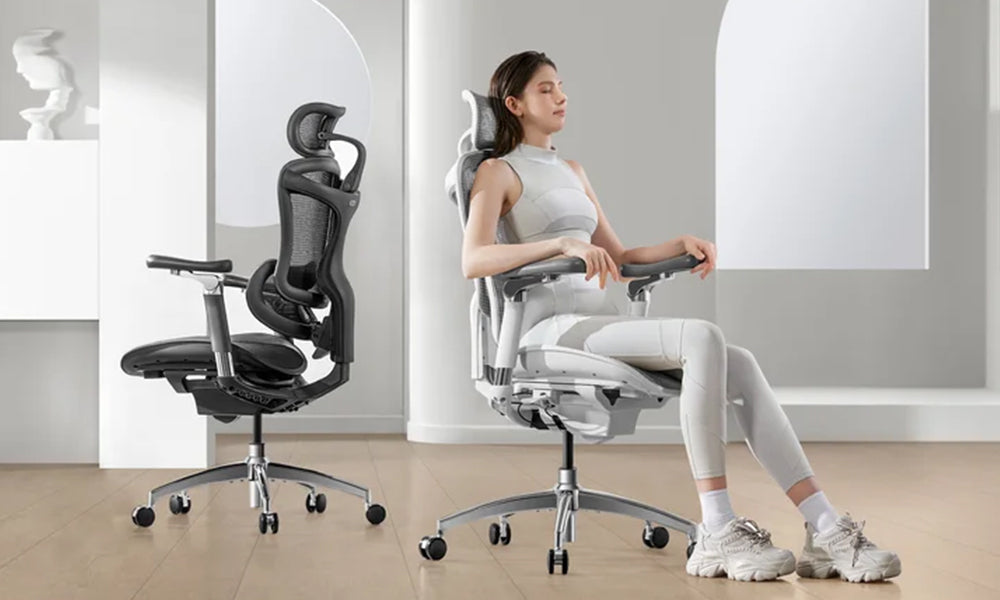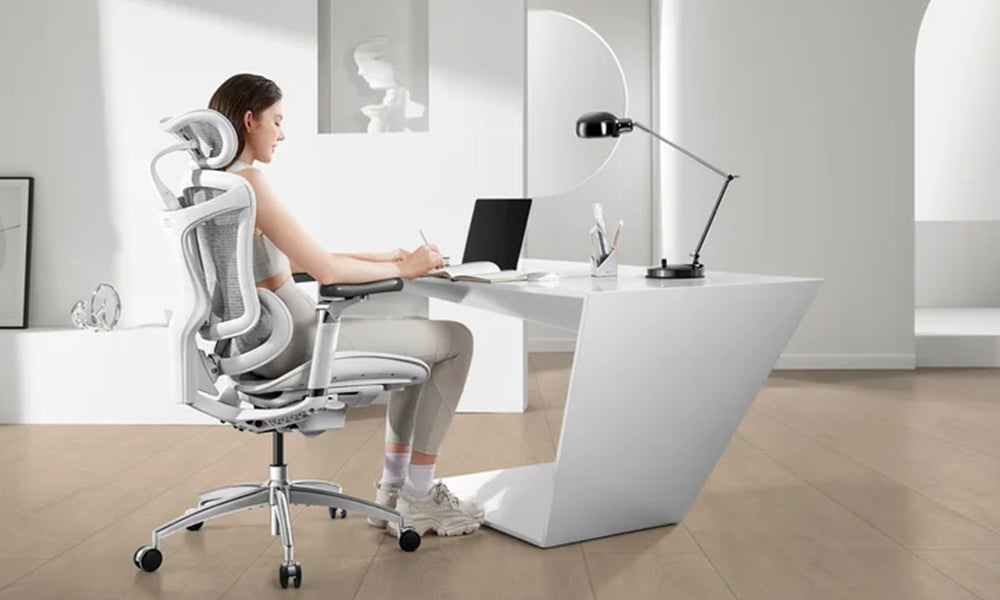An office chair is an essential piece of furniture, providing comfort and support during long workdays. However, with frequent use, office chair cushions can quickly accumulate dust, stains, and odors, making them less comfortable and appealing. Fortunately, maintaining a clean office chair cushion is easier than you might think. In this comprehensive guide, we will walk you through the step-by-step process of cleaning your office chair cushion to ensure it remains fresh, comfortable, and in tip-top condition.
Why Cleaning Your Office Chair Cushion is Important
Before delving into the cleaning process, it's crucial to understand why regular maintenance of your office chair cushion is essential. A clean cushion not only enhances the appearance of your workspace but also plays a vital role in your health and well-being.
Dust, dirt, and allergens can accumulate in your cushion over time, leading to various health issues, such as allergies and respiratory problems. Moreover, stains and odors from spilled coffee or snacks can create a less-than-professional atmosphere in your office.
Regular cleaning also prolongs the life of your chair cushion, saving you money in the long run. By following the steps outlined in this guide, you can ensure that your office chair cushion remains in top condition, promoting both comfort and productivity.
Gather the Necessary Supplies
To clean your office chair cushion effectively, you will need a few essential supplies. Before you begin, make sure you have the following items on hand:
a. Vacuum cleaner with an upholstery attachment
b. Mild liquid dish soap
c. Warm water
d. Soft-bristle brush or sponge
e. Clean, white cloths or microfiber towels
f. Baking soda (for dealing with odors)
g. Fabric protector (optional, for prevention)
Once you've gathered these supplies, you'll be ready to start the cleaning process. It's always a good idea to read the care label on your chair cushion to ensure you follow any specific manufacturer recommendations.
Preparing for Cleaning
Before you dive into cleaning your office chair cushion, it's essential to prepare the area and the cushion itself:
a. Remove the cushion from the chair: To access all sides of the cushion, carefully take it off the chair.
b. Find a well-ventilated workspace: Cleaning the cushion indoors is best, but if the weather is nice, you can also work outside. Good ventilation helps your cushion dry faster and more thoroughly.
c. Vacuum the cushion: Start by using a vacuum cleaner with an upholstery attachment to remove loose dirt, dust, and debris from the cushion's surface and crevices. This initial step will make the subsequent cleaning process more effective.
Basic Cleaning Steps
Now, let's get into the nitty-gritty of cleaning your office chair cushion. The process can be divided into two main methods: dry cleaning and wet cleaning.
a. Dry Cleaning Methods:
Use Baking Soda for Odor Removal:
If your cushion has absorbed unwanted odors, sprinkle a thin layer of baking soda over the entire surface. Let it sit for at least 15 minutes, then vacuum it up. Baking soda is excellent for neutralizing odors and freshening up the cushion.
Brush Off Surface Debris:
For a quick refresh, use a soft-bristle brush or a lint roller to remove surface debris, such as pet hair or lint. This is a simple and effective way to keep your cushion looking neat between deep cleanings.
b. Wet Cleaning Methods:
Create a Soap Solution:
Fill a bucket with warm water and add a small amount of mild liquid dish soap. Mix until you have a soapy solution. Be cautious not to use too much soap, as it can leave residue.
Test a Hidden Area:
Before applying the soapy solution to the entire cushion, it's a good idea to test it on a small, inconspicuous area to ensure it doesn't cause any color fading or damage to the fabric.
Scrub Gently:
Dip a soft-bristle brush or sponge into the soapy solution and gently scrub the entire cushion. Pay extra attention to any stained areas or spots with built-up grime. Avoid oversaturating the cushion to prevent mold or mildew growth.
Rinse Thoroughly:
Using a clean cloth or sponge, wipe down the cushion with plain water to remove any soap residue. It's crucial to rinse thoroughly to prevent a soapy film from forming on the fabric.
Blot Excess Water:
After rinsing, gently blot the cushion with a clean, white cloth or microfiber towel to remove excess moisture. Do not wring or twist the cushion, as this can damage the fabric and alter its shape.
Air Dry Completely:
Finally, place the cushion in a well-ventilated area and allow it to air dry completely. Ensure it's completely dry before placing it back on your chair to avoid mold and mildew growth.
Dealing with Stains and Odors
Stains and odors are common issues with office chair cushions, but they can be effectively addressed. Here's how to tackle them:
a. Stain Removal:
For fresh stains, immediately blot the area with a clean cloth to absorb as much of the spill as possible. Then, follow these steps:
i. Prepare a mixture of warm water and a small amount of mild liquid dish soap.
ii. Gently scrub the stained area with the soapy solution using a soft-bristle brush or sponge.
iii. Rinse the area with plain water and blot it dry.
For older or stubborn stains, consider using a fabric stain remover or consult the care label for specific stain removal instructions.
b. Odor Elimination:
If your cushion has absorbed unwanted odors, in addition to the baking soda method mentioned earlier, you can also try the following:
i. Place the cushion outside in direct sunlight for a few hours. Sunlight can help eliminate odors.
ii. Spritz the cushion with a mixture of equal parts water and white vinegar. Allow it to air dry completely.
iii. Consider using a fabric refresher spray to keep your cushion smelling fresh.
Preventive Maintenance Tips
To keep your office chair cushion in top condition, consider the following preventive maintenance tips:
a. Use a fabric protector: Apply a fabric protector, like Scotchgard, to your cushion to help repel stains and make future cleaning easier.
b. Regularly vacuum: To prevent dirt and dust buildup, vacuum your cushion at least once a week, paying attention to crevices and seams.
c. No food and drink: Avoid consuming food and drinks on your chair to minimize the risk of spills and stains.
d. Wash your hands: Ensure your hands are clean before sitting in your chair to reduce the transfer of oils and dirt to the cushion.
e. Rotate and flip: If your chair cushion is reversible, periodically rotate and flip it to even out wear and tear.
f. Address spills promptly: Accidents happen, so if a spill occurs, address it immediately to prevent it from becoming a stubborn stain.
g. Upholstery care: Regularly inspect your chair's upholstery for loose seams or tears, and repair them promptly to prevent further damage.
h. Schedule deep cleanings: Even if you follow preventive measures, schedule a deep cleaning of your chair cushion every 6-12 months, or as needed.
Conclusion
In conclusion, a clean and well-maintained office chair cushion not only adds to the aesthetics of your workspace but also contributes to your overall health and comfort during long hours at the desk. By following the steps outlined in this guide, you can effectively clean your office chair cushion, deal with stains and odors, and implement preventive maintenance measures to ensure it stays in excellent condition for years to come.
Remember to adapt your cleaning approach based on the specific fabric and care recommendations for your chair cushion. With regular care and attention, your office chair cushion will remain a supportive and comfortable companion throughout your workdays.



